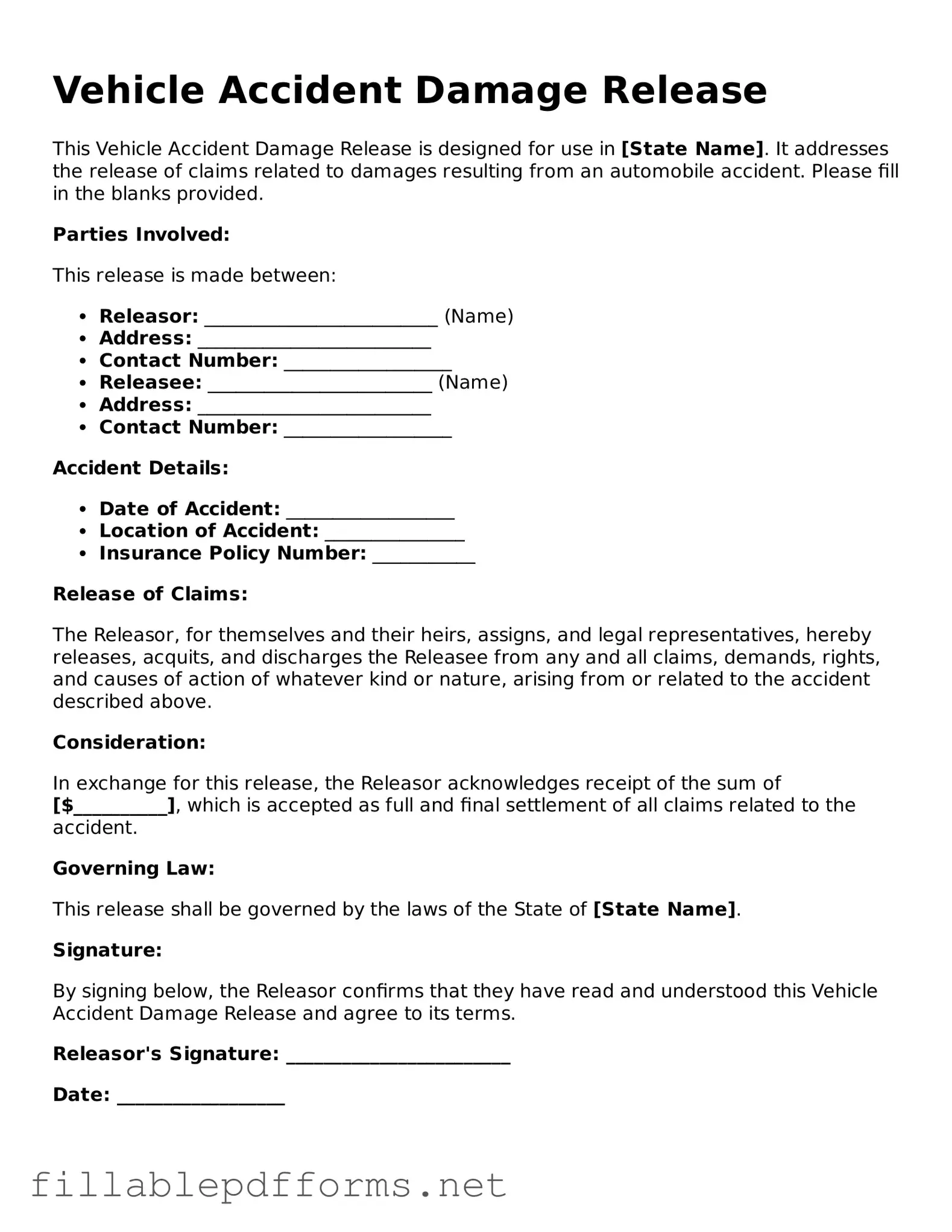Blank Vehicle Accident Damage Release Template
The Vehicle Accident Damage Release form is a legal document used by individuals involved in a vehicle accident to formally release the other party from any further claims related to damages. This form helps streamline the resolution process by documenting that the parties have settled their differences regarding the accident. Understanding this form is essential for ensuring that all parties are aware of their rights and obligations following an accident.
Launch Editor Here
